Workshop Process & Structure
All groups were instructed to go through the same process. However, we used different tools for each group to test them and their effectiveness on the outcome of each group. The final purpose was to observe, evaluate and reflect upon how the teams will respond to the same goal using different tools or methods. Some of the tools and methods were common for all groups. These tools were new tools to be introduced by the project that needed wider testing to support their development. The workshop was phased into 8 phases; each corresponds with a phase of the design futures elements identified through the research project intellectual outputs
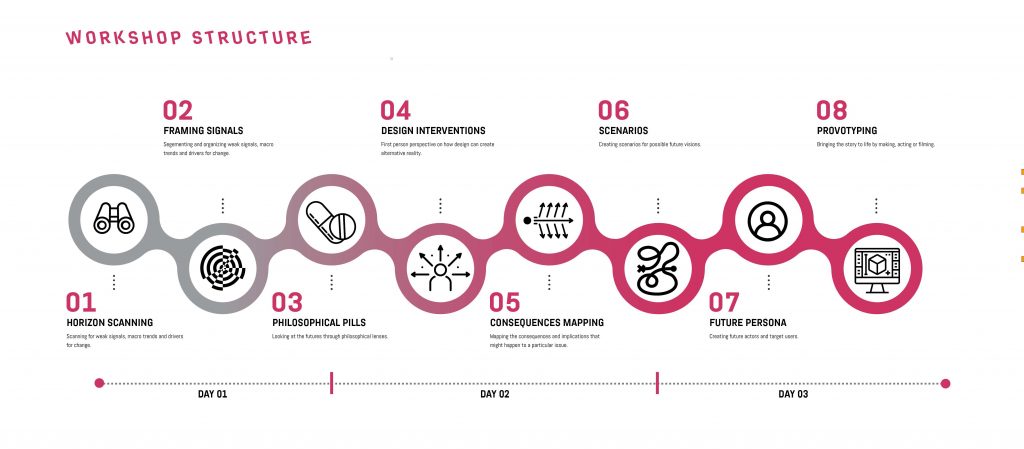
Workshop Structure
The first phase of the workshop process was the Horizon Scanning or blue-sky research. Participants were asked to discuss the topic in detail and to research about the issues and challenges discussed in the keynote speech. The aim of this phase is to give a chance for the team dig deeper in the research topic and to formulate a common understanding about the focus points they would like to develop in the project. At the end of this phase the teams have gathered weak signals and macro-trends around the area of focus they have selected. Following the Horizon scanning is the second phase of the workshop which was the Framing Signals; at which each group has systematically identified and reorganized the insights and macro trends they have gathered in order to tackle the focus issue of the project. The aim of this phase to interpret and segment the gathered concepts and ideas and to eliminate the irrelevant ones. Tools used in this was the PESTLE Analysis, CIPHER Analysis, VERGE and Futures Wheel.
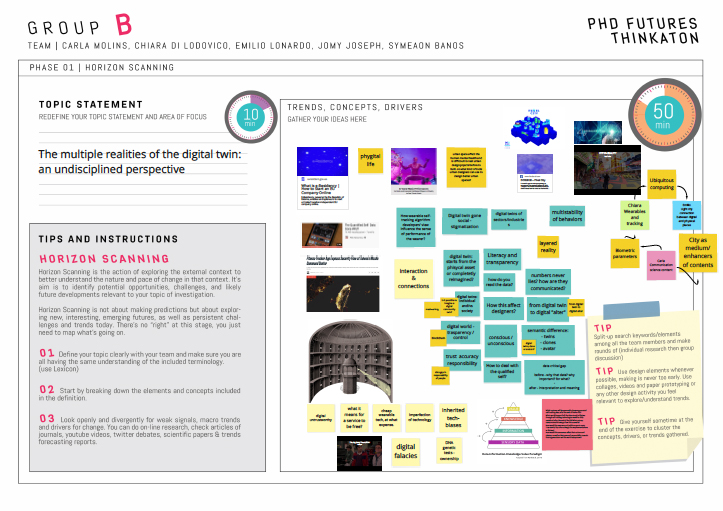
Horizon Scanning from the working sessions
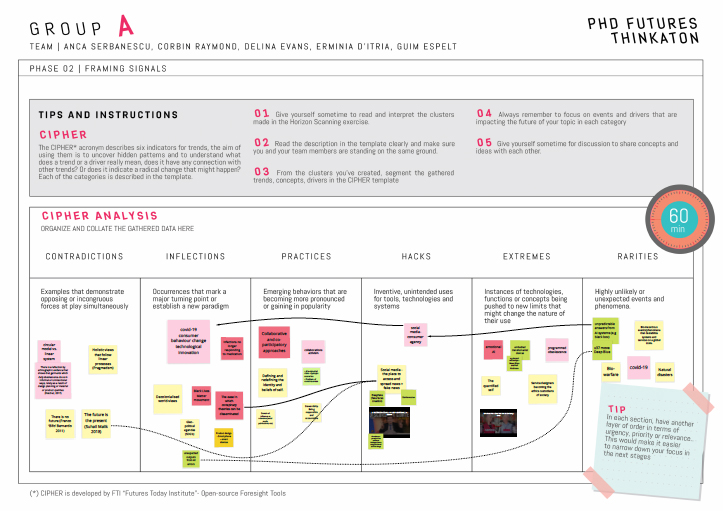
Framing Signals from the working sessions (CIPHER Canvas)
The third part of the workshop was the Futures Philosophical Pills. In this stage, each group have reflected upon their findings by using pre-selected philosophical concepts that are meant to disrupt future discussion upon their focus issue in order to trigger new dimensions and to challenge the teams for further exploration in the futures plurality and challenges that might affect their focal issue. The concepts selected were Post-Anthropocene, Animism, Decolonisation, Border Politics/Displacement. After this, participants were asked to reorganise their findings after reflecting upon the philosophical pills. This phase was introduced and presented by Dr. Betti Marenko the principal investigator of the Philosophical Pills and one of the guest speakers in this workshop.
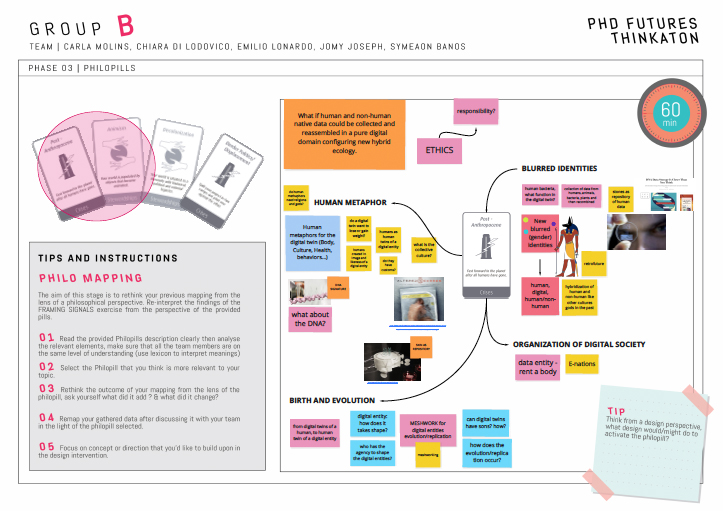
Philosophical Pills Canvas from the working sessions
Following the Philosophical Pills, participants were asked to go through the fourth phase of Design Interventions. This phase capitalises on the design practice. It does acknowledge design action as the main driver and tool which engages in materialising futures.
The purpose of this phase is to encourage participants to design futures through first person perspective by creating alternative present as a method to engage oneself in futures discussions. This element was presented and explained by Dr. Oscar Tomico who was one of the guest lecturers to this workshop.
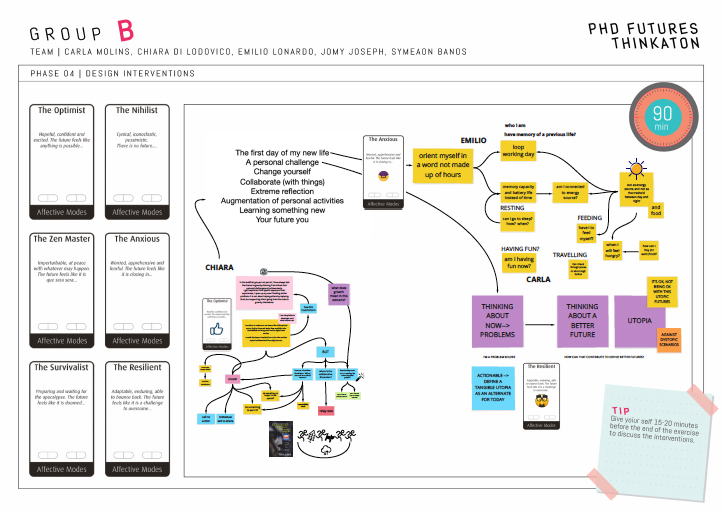
Design Interventions Canvas from the working sessions
Following the Design intervention, participants were asked to go through Consequences Mapping The aim of this activity was to project on the focal issue they identified in the design interventions and discuss what could be the implications that the focal issue might cause or affect in the future. Consequences Mapping exercises helped the participants to create different scenarios focusing on several paths.
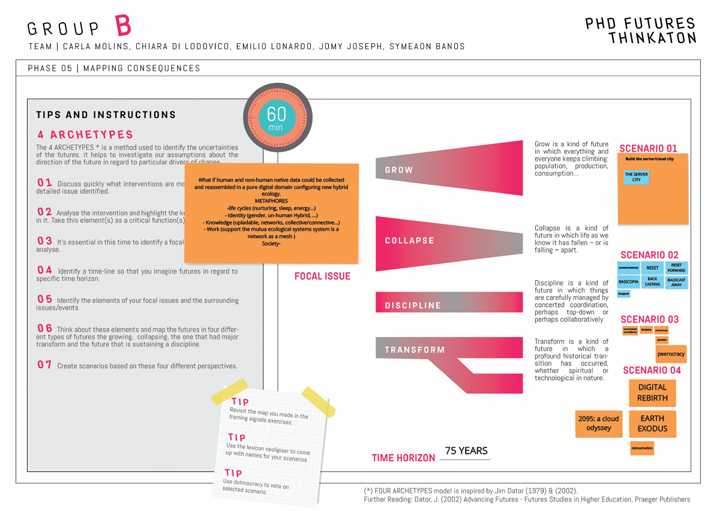
Mapping Consequences Canvas from the working sessions ( 4 Archetypes Canvas)
Following the Mapping Consequences is developing Scenarios. At this stage, participants were asked to put the insights gathered from the previous stages into one scenario. The scenarios were created according to criteria that were developed due the course of the project research. The criteria were: Immediacy, Provocation, Sensoriality, Consistency, Coherence. Participants were asked to follow these criteria in developing their scenario.
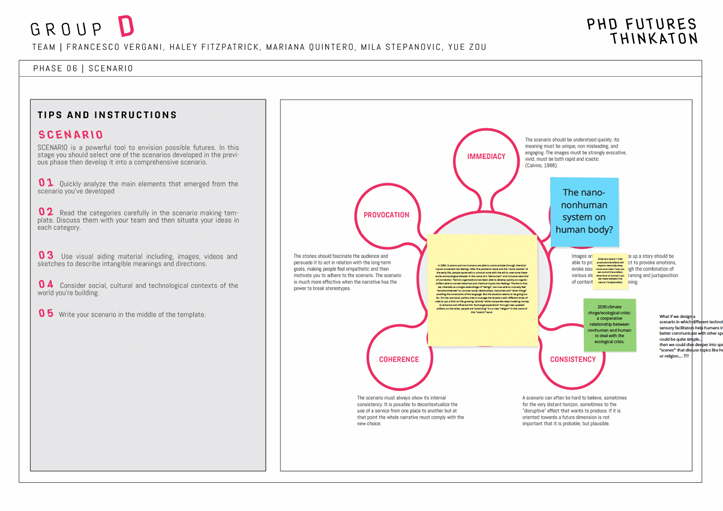
Scenarios Canvas from the working sessions
Following Scenarios, we asked participants to develop Future Personas. A persona that should be situated within the scenario of the future. The participants used different types of tools and canvases to create the persona, the methods were: A Day in a Life, Futures Persona, Story World and Palmistry.
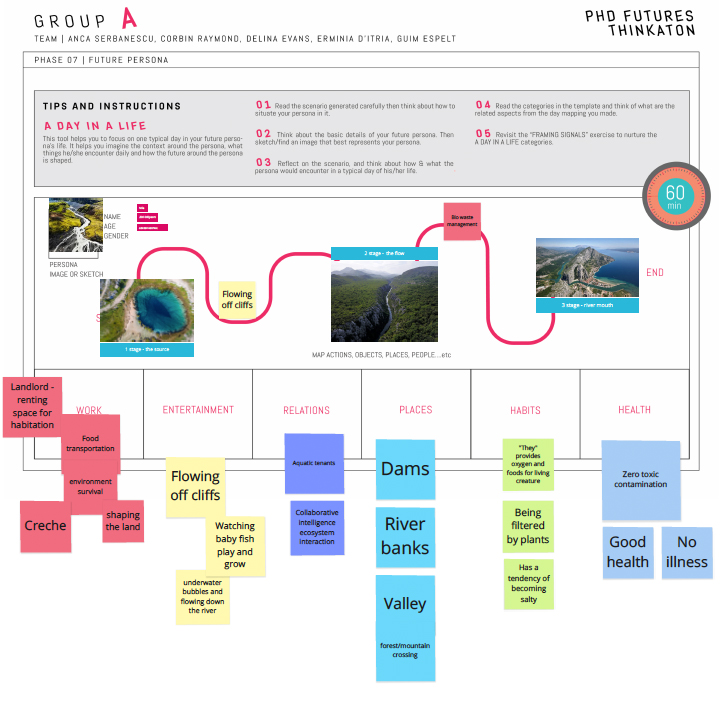
Future Persona Canvas from the working sessions ( A day in a Life)
The last activity during the workshop was the Provot-typing. Provo-typing is a word that mixes between the word prototype and the word provoke. In other words, it means a provocative prototype. We asked the participants to create a prototype with the aim to open up a discussion about the future through designing an artifact, story or a video. All groups were asked to select one type of provo-typing methods that suits their projects, the types suggested were storyboard, provo-typing, future filming and future-telling.
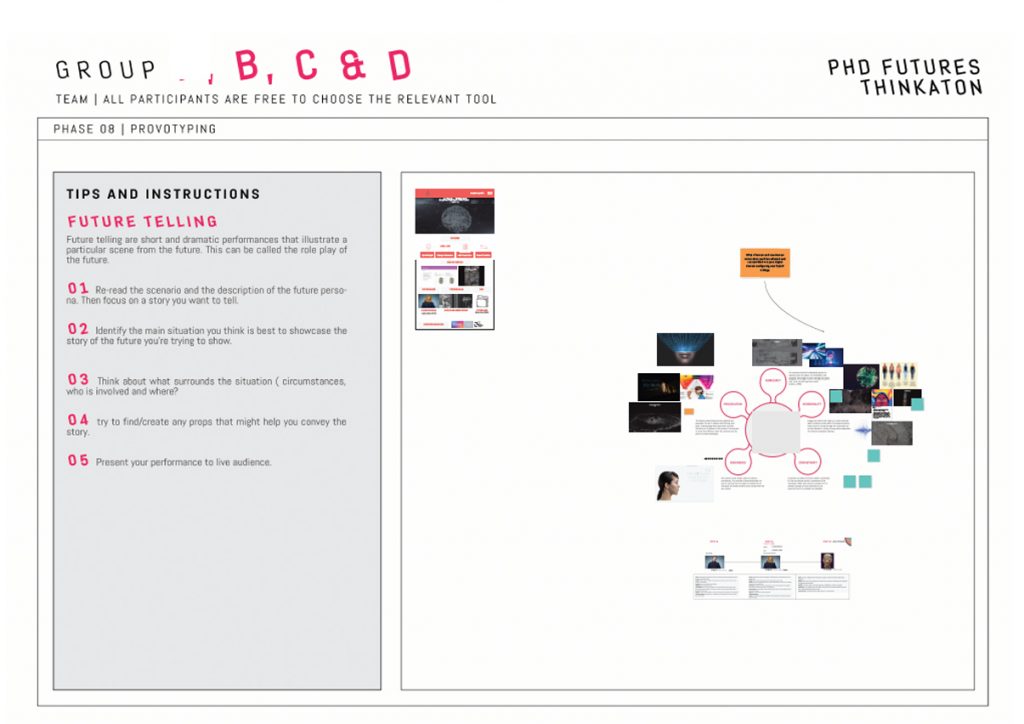
Provotyping Canvas from the working sessions (Future Telling)